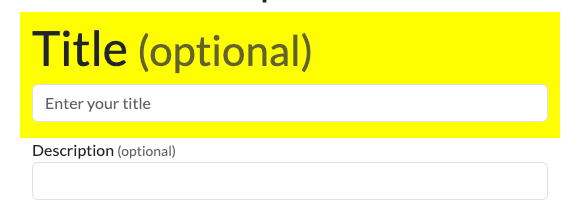Understanding JSON Field Settings
In DynForms, you can adjust various settings for form fields using a JSON configuration. Below are the available options and what they do:
General Field Settings
Description ("description")
- What it does: Adds a short explanation or help text for the field, including links to documentation if needed.
- Example:
"description": "[Learn more about App Relation Fields](https://docs.dynforms.net/docs/field-types/app-relation)"
Required ("required")
- What it does: Defines whether the field must be filled before submitting the form.
- Options:
true→ The field must be filled.false→ The field is optional.
- Example:
"required": true
Placeholder ("placeholder")
- What it does: Shows example text inside the field to guide the user before they enter their data.
- Example:
"placeholder": "Start typing to search..."
CSS Classes ("css_classes")
- What it does: Allows adding CSS class names to customize the field's style.
- Example:
"css_classes": "mycompany-large-field"
You can add your own custom classes here and reference them in the extra_css of the form:
Add the mycompany-large-field to the css_classes of the field. Then add following to Extra CSS
which you can find under "Basic form settings" in the visual form editor.
.mycompany-large-field {
font-size: 48px;
background-color: yellow;
}

Another way to use this is to use the CSS classed provided by our theme. Our default form theme uses the Bootstrap 5 CSS framework in the background. Most of the classes documented in the Boostrap 5 documentation can be used.
The following example uses the border utility class to paint a rounded red border around the form field
in (see Bootstrap 5 documentation on borders for more):
"css_classes": "border border-danger rounded"
Here is how it would look like with the default theme:
Field Width ("field_width")
- What it does: This feature is currently not supported yet!
- Example:
"field_width": "50%"
Visibility ("visible")
- What it does: Controls whether the field is shown or hidden.
- Options:
true→ The field is visible.false→ The field is hidden.
- Example:
"visible": false
App Relation Specific Settings
Multiple Selection ("multiple")
- What it does: Defines whether users can select one or multiple items from the related apps.
- Options:
true→ Users can select multiple items.false→ Users can select only one item.
- Example:
"multiple": true
Referenced Apps ("referenced_apps")
- What it does: Specifies which apps in Tape the field pulls data from.
- Example:
"referenced_apps": [
{
"field_id": 569924
}
] - Details:
- Each referenced app is defined by a
field_id. - The field retrieves data from this app when users search for related records.
- Each referenced app is defined by a
By understanding these settings, you can customize your DynForms fields to fit your specific needs. 🚀